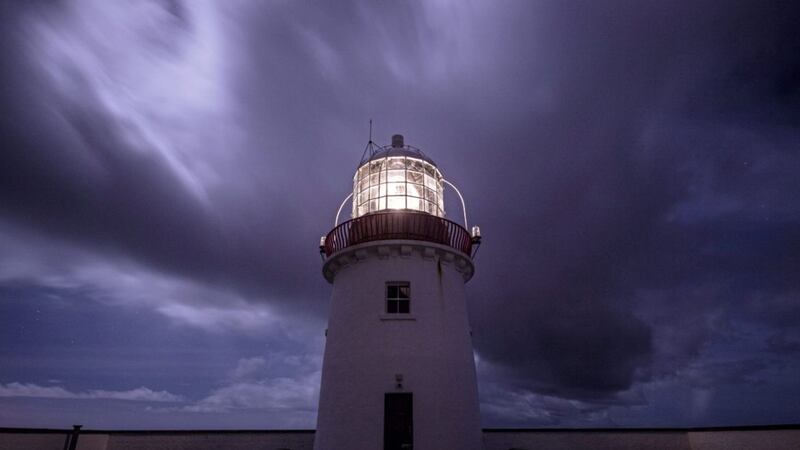There’s a 32-metre tall lighthouse in my living room. It was shipped over from Brittany. I moved it in on Saturday. To be honest, the operation was a bit awkward. The size makes it a snug enough fit.
It’s an epic photograph of the famous Ar-Men lighthouse being battered and pounded by a ravenous storm surge. The impressive 6-foot by 4-foot canvas now hugs against the ceiling and the door frame on one wall.
Lighthouses have always beguiled me. There is something profound about people building such a lonely round pillar, clinging to an outlying rock – often unattached to a mainland, standing constantly tall and strong and steady, resilient and unyielding against the fiercest howling storms, and unerringly offering uncertain travellers a North Star in the bleakest of life’s conditions.
Lighthouses are an amazing example of humanity’s ability to create common sense solutions for the common good of all – without regard for whom they help. Lighthouses don’t discriminate. Nor do they prevaricate. They are reliable and certain. They have no alternative.
In Ireland, torch signals from some rocky headlands were lit for mariners by monks as far back as the fifth century. Lights cutting through dark, shining warnings for welfare, signalling perils of danger, pointing pathways of safe passage.
Today, the current management of lighthouses for the island of Ireland, and all of its seas, still rests with the Commissioners of Irish Lights in Dublin which traces its history to founding statute in 1786. Irish Lights took over management of all Ireland’s lighthouses in 1810. Funding today comes jointly through the Irish and British governments.
Think about that. The role of Irish Lights started before the foundation of the United Irish Society, the Battle of the Diamond, the Act of Union, the Great Hunger, the Ulster Convenant, the Easter Rising, the formation of Northern Ireland, the creation of the Republic of Ireland, the Irish Constitution, and the Good Friday (Belfast) Agreement.
It’s an all-island body that was born at the time of the American Declaration of Independence and the French Revolution. It’s an Ireland-wide entity that has transcended every manner and means of constitutional upheaval – as big and profound as any of the current issues affecting these islands, like Brexit. And helped save countless lives. It has moved through technological advances of whale oil, to coal gas, to paraffin, to electricity, to current LED lighting.
In practical terms, you only have to dander a few hundred yards up the docks beyond Titanic Belfast to see one of the most stunning practical examples of its historic island-wide impact. Many people walk on past. They should stop and look. Especially at night. It’s spectactular.
In 1887, the lighthouse on Tory island (a memory that still blinks from childhood holidays in Machaire Rabhartaigh) received the world’s first ‘hyper-radial’ lenses. These were a specially constructed type of massive cut-glass optic from Paris that greatly improved the lighthouse’s reach into the North Atlantic.
In the mid-1920s, that optic was split in two and used to make a new optic for Mew Island off the county Down coast, a key entry point towards Belfast from the Irish Sea. From Donegal to Down. Frictionless.
In recent years as technology moved on, the optic from Mew Island has been preserved and specially housed at Titanic Quarter, through a joint project between Titanic Foundation and Irish Lights.
Ireland’s lighthouses have always been a common sense solution for the common good of all. They highlight how sensible policies and practices can - and should - transcend historical challenges.
In personal terms too, they remind us that, at some point, a beacon of hope will always appear on the horizon to steer us right, even if we accept that the roughest seas and darkest weather are also a necessary part of life’s journey.
Despite all of the terrible human failings that we have inflicted against each other on this island (and still do, like ingrained generational poverty), we still retain an innate brilliance and capacity as peoples. We need to once again unleash that positive potential with as much collective genius as possible.
Now is a time – with common sense for common good – when we should be imagining new lighthouse ideas, policies and practices that could last hundreds of years and navigate the deepest differences, to guide us safely through the current choppy waters.
To reframe the flowing poetry of Belfast’s former poet laureate, Sinead Morrisey, we each need to ‘hurl our ideas out once again, beyond our own parallax’. We need to start lighting the dark.
Twitter: @jarlathkearney








